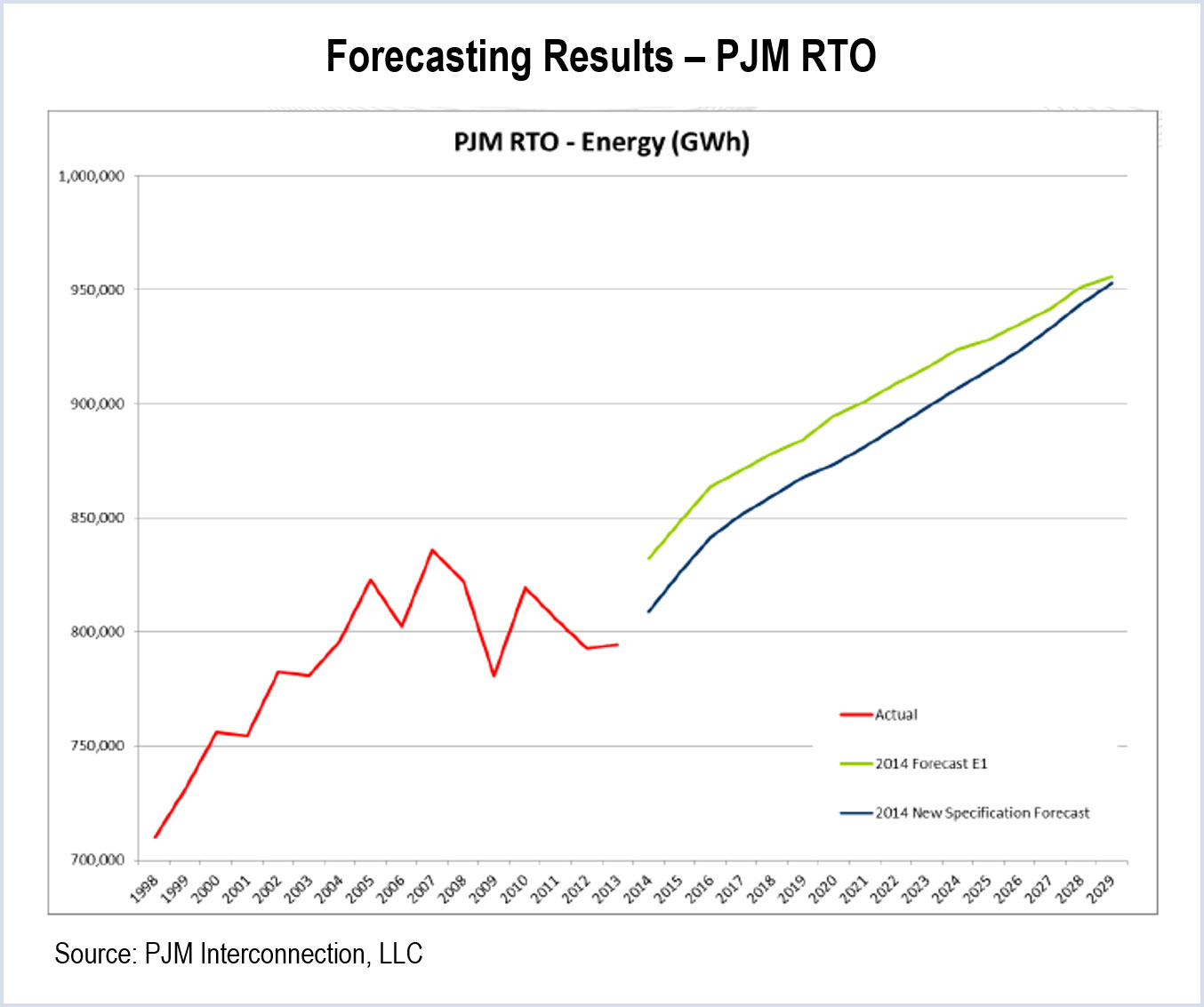PJM is testing a new load forecasting model to reverse a marked “degradation” in forecast accuracy.
The model being tested accounts for factors such as appliance saturation and energy efficiency that were previously not included, PJM’s Andrew Gledhill told the Planning Committee last week.
The new model’s “equipment indices” improved near-term forecast accuracy but caused an increase in instability because the forecasts of appliance saturation and efficiency change over time. The forecasts are made by Itron based on data from the Energy Information Administration. “The understanding of where we’ve been and where we’re going has had a tendency to change over time,” Gledhill said.
Officials said it was difficult to determine the model’s long-term forecast accuracy because of data limitations.
PJM is investigating incorporating the equipment indices into its peak-load model. One concern: Will accounting for these trends in the peak model result in an overlap with energy efficiency as a capacity market resource?
PJM previously considered shortening the estimation period but found that it created anomalies. The current forecast uses an estimation period of 1998 to the previous August. PJM found that while a three-year-ahead forecast resulted in a 0.6% reduction for the RTO, some zones increased by as much as 9% while others dropped 6% or more.
PSEG Seeks Injection Rights for PARs
The Planning Committee Tuesday approved PSEG Energy Resources & Trade’s problem statement to consider awarding firm withdrawal and injection rights to transmission projects employing phase angle regulators (PARs).
PJM awards withdrawal and injection rights to controllable AC and DC merchant transmission facilities using only variable frequency technology, which excludes PARs.
PSEG said PJM’s interpretation “creates an impediment to the development of a class of controllable merchant transmission projects that could efficiently address seams issues between PJM” and neighboring regions. Because PAR projects are not awarded rights, “it will be difficult if not impossible for PARs-based projects to be deemed deliverable” for sales of capacity or energy, PSEG said.
GMD Reliability Standard Struggling to Win Support
The North American Electric Reliability Corp. is struggling to win support for its reliability standard on geomagnetic disturbances, PJM’s Frank Koza told the PC last week. Two rounds of voting have failed to gain the two-thirds support needed to endorse the standard for review by the Federal Energy Regulatory Commission.
The most recent vote won support of only 58% of stakeholders, and a third vote will be taken this month, Koza said. “We need to turn about 25 votes around,” he said.
The standard requires reliability coordinators and some transmission operators to institute operational procedures to mitigate the effect of GMDs.
NERC is working on stage two of the standard, in which it must determine what severity GMD will constitute a “benchmark” GMD event. Covered entities will be required to assess the potential impact of such benchmark events on their equipment and systems. FERC required NERC to complete the standard by January. (See FERC OKs GMD, Training Standards; Proposes Modeling Rule Change.)



